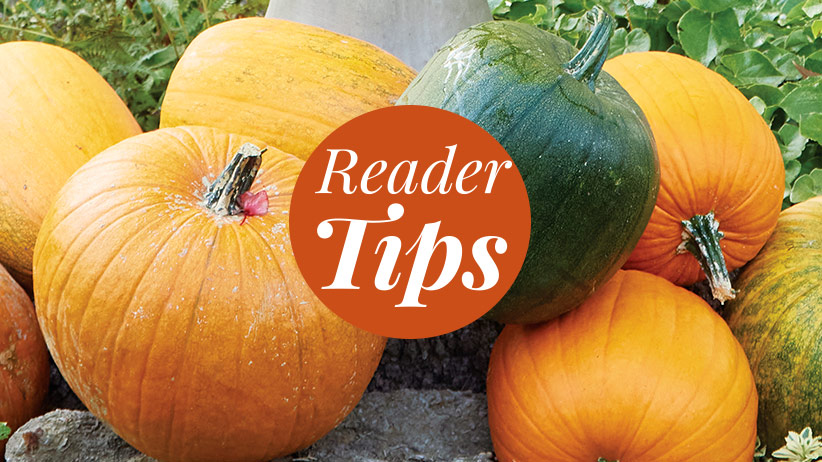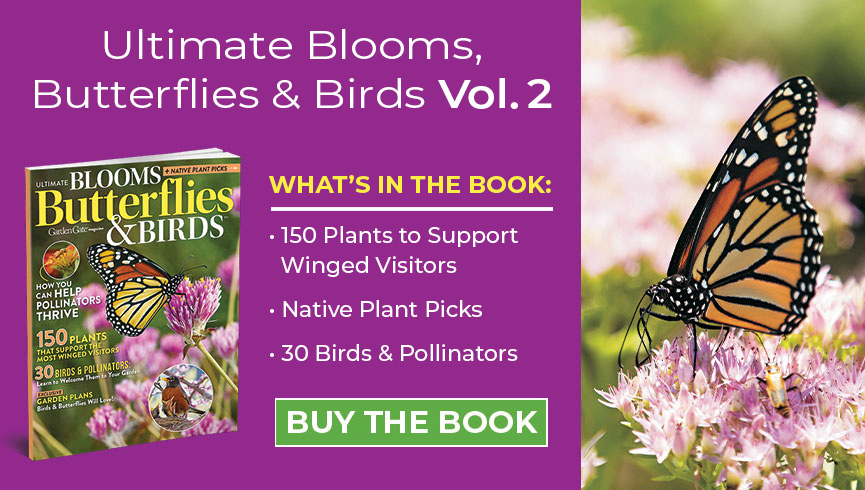Flirt with soft colors and texture in spring
With the arrival of spring, emerging perennials fill the garden with soft texture, restoring life to the harsh, often barren landscape of winter. It’s a thrill to see fresh green leaves and splashes of color from early bloomers and hear the buzz of spring pollinators.
Plants that return every year offer an easy start to the season—just a bit of cleanup and the garden is ready to go. Add a cool-loving annual to the mix in a pastel palette to boost the relaxing vibe before the arrival of bolder summer flowers.
Delicate, airy flowers in soft shades of blue, pink and purple woo you with a feeling that is comfortable, even romantic. Imagine being surrounded by the sweet colors and light textures of the plants in these combinations. You may fall in love!

Serene palette for shade gardens
Subtle pastels offer color in this shady spot, and even when spring is past and the blooms are done, variegated foliage provides sparkle. As the season progresses, trim back spent flowers to allow the speckled leaves of the pulmonaria to shine. The fronds of Korean rock fern unfurl gracefully in midspring to bring an added layer of texture.
Care tip
While these plants can handle dry conditions, they’ll stay fresh with consistent moisture throughout the summer.
Meet the plants
-
A) Variegated Solomon’s seal (Polygonatum odoratum var. pluriflorum ‘Variegatum’)
Perennial; pendulous white flowers on long stems in spring; variegated leaves; part to full shade; 2 to 3 ft. tall, spreading; cold hardy in USDA zones 3 to 8 -
B) Korean rock fern (Polystichum tsus-simense)
Perennial; dark green, shiny fronds unfurl from fiddleheads in midspring; part to full shade; 12 to 15 in. tall, 6 to 18 in. wide; cold hardy in USDA zones 6 to 9 -
C) Pulmonaria (Pulmonaria hybrid)
Perennial; pink buds open into blue flowers from mid- to late spring; fuzzy, often spotted leaves; part to full shade; 6 to 18 in. tall, 12 to 18 in. wide; cold hardy in USDA zones 3 to 9

Add whispers of blue with windflower & bugleweed
The soft blue hues of bugleweed and windflower create a dreamy display of cool, calming flowers through chilly spring days. Windflower, a perennial rhizomatous tuber, is cold hardy in zones 7 to 10. Plant in fall for spring blooms.
When summer’s heat arrives, windflower retreats into dormancy. As plants die down, tuck shade-loving summer annuals, such as impatiens or wax begonias, in the space between the bugleweed for some extra color. Or try browallia to continue the blue color scheme.
Maintenance tips
If your windflower becomes overcrowded with fewer blooms, divide in fall where it’s hardy. As windflower fades, bugleweed will fill any gaps with lush, ground-hugging foliage. It spreads easily by runners, rooting into the ground to form a thick mat. Cut runners back to keep it in check. For a cleaner look after blooms fade, deadhead bugleweed by hand or use a string trimmer or hedge shears to quickly remove the spent blossoms.
Good to Know:
In zones 6 and colder, where windflower is not hardy, start the rhizomatous tubers indoors in late winter. Transplant them outside once the risk of frost has passed, and they will bloom in spring. Lift the tubers in fall to overwinter, or treat them as annuals.
Meet the plants
-
A) Windflower (Anemone coronaria ‘Mr. Fokker’)
Perennial; violet-blue flowers above ferny foliage form in spring; full sun to part shade; 8 to 12 in. tall and wide; cold hardy in USDA zones 7 to 10 -
B) Windflower (Anemone coronaria ‘Sylphide’)
Perennial; pink poppylike flowers above ferny foliage in spring; full sun to part shade; 8 to 12 in. tall and wide; cold hardy in USDA zones 7 to 10 -
C) Bugleweed (Ajuga reptans ‘Chocolate Chip’)
Perennial; short spikes of blue flowers rise above bronze to green foliage in mid- to late spring; full sun to full shade; 2 to 6 in. tall, 6 to 12 in. wide; cold hardy in USDA zones 3 to 9
You Might Also Like:
Shade Garden Design Tips
VIDEO: Get Your Peony in Shape for Spring
Ultimate Guide to Container Gardening

Add dreamy pastels to spring garden beds
These delicate beauties fill your garden with color for weeks, with only a bit of deadheading to keep the blooms going strong. Cool-loving pansies may falter with summer’s heat, so swap them for a sun-loving annual to match the vibrant geraniums and fragrant alyssum. Cut back salvia stems to the ground if the plant splays open, and new growth will fill the space with a light rebloom.
Meet the plants
-
A) Salvia (Salvia x sylvestris Blue Hill)
Perennial; periwinkle blue flower spikes above mounded foliage in late spring to midsummer; full sun; 18 to 24 in. tall, 12 to 18 in. wide; cold hardy in USDA zones 4 to 9 -
B) Zonal geranium (Pelargonium Rocky Mountain™ Lavender)
Tender perennial (usually grown as an annual); lavender-pink flower clusters from midspring to fall; part to full shade; 14 to 18 in. tall, 16 to 20 in. wide; cold hardy in USDA zones 10 to 11 -
C) Pansies (Viola x wittrockiana Spring Matrix™ Blue Wing, Spring Matrix™ White Blotch, Mammoth Pink Berry)
Tender perennial (usually grown as an annual); bicolor flowers with facelike markings in early to late spring; full sun to part shade; 6 to 8 in. tall, 8 to 10 in. wide; cold hardy in USDA zones 6 to 10 -
D) Sweet alyssum (Lobularia maritima)
Tender perennial (usually grown as an annual); fragrant white, purple, pink or peach flower clusters from midspring to frost; full sun to part shade; 3 to 9 in. tall, 6 to 14 in. wide; cold hardy in USDA zones 9 to 11
You Might Also Like:
Long-lasting Annuals for Your Garden
DIY Marbleized Terra Cotta Pots
Shop Our Garden-themed Hats
















